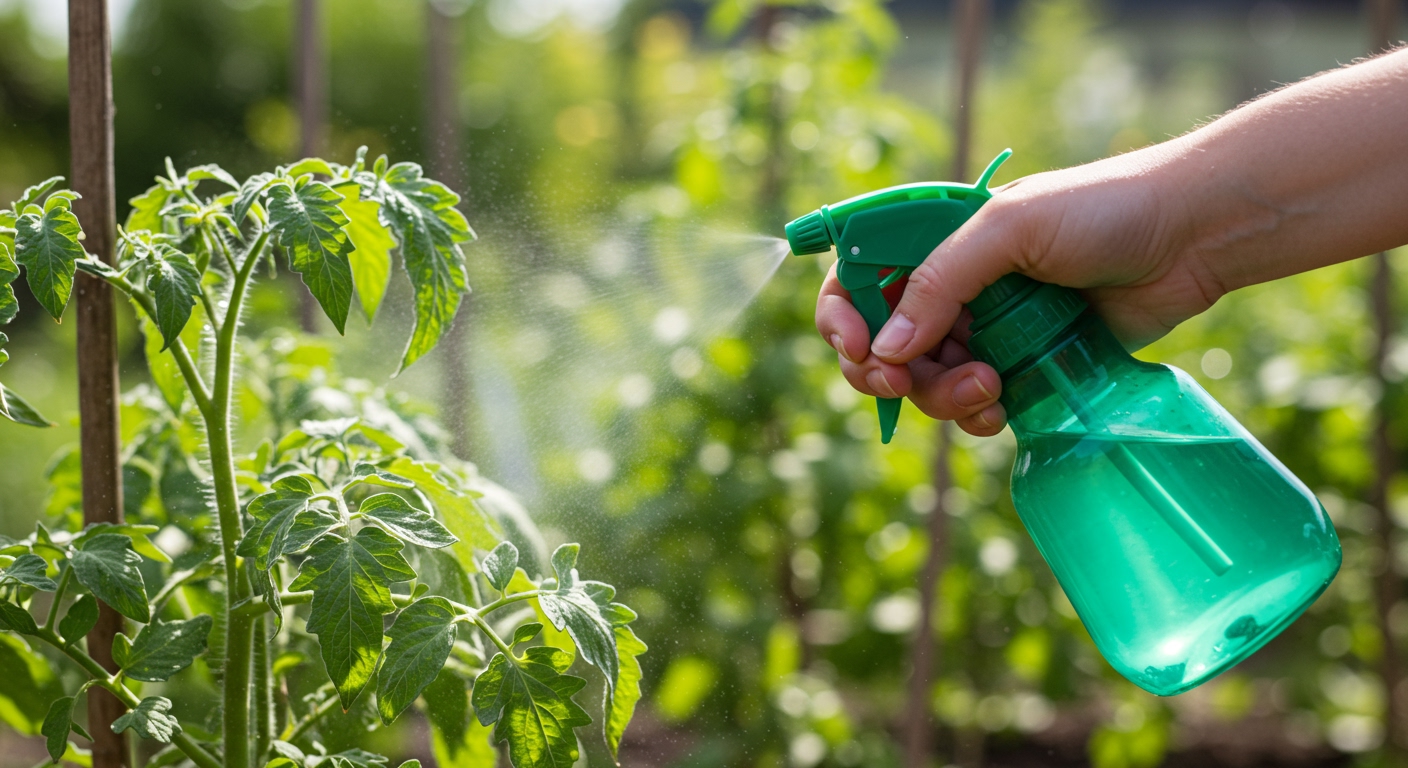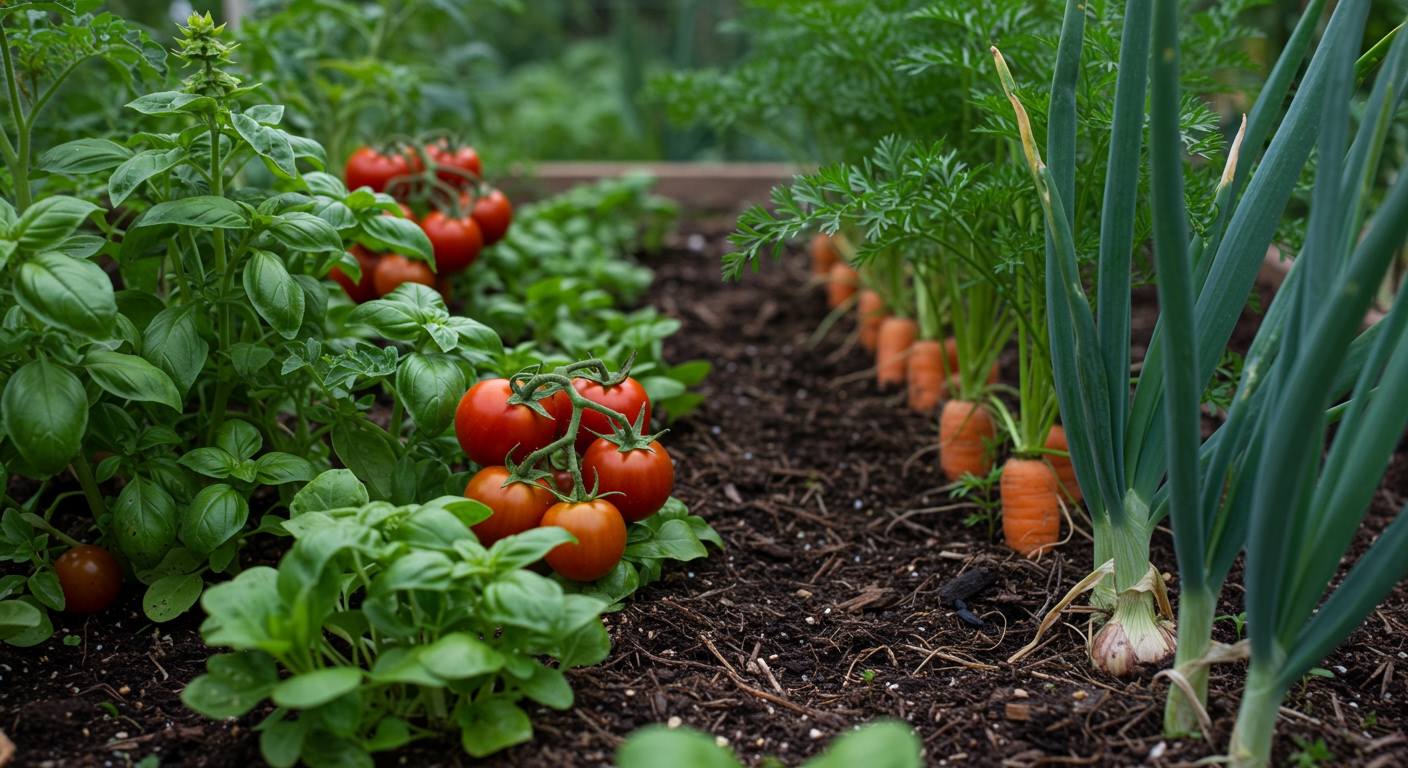In an age where wellness and self-sufficiency are increasingly valued, the allure of natural remedies and creating a home apothecary has never been stronger. Imagine stepping into your backyard, balcony, or even a sunny windowsill to gather fresh herbs for a calming tea, a soothing skin salve, or a potent immune booster. This isn’t just a dream reserved for experienced herbalists; it’s an accessible and deeply rewarding reality for anyone, even absolute beginners.
Growing your own medicinal herbs offers a unique connection to nature and empowers you with fresh, potent ingredients for your health. This comprehensive guide will walk you through everything you need to know to start your first healing garden, focusing on easy-to-grow medicinal herbs, essential gardening tips, and simple ways to harvest and use your bountiful remedies.
Why Grow Your Own Medicinal Herbs? The Benefits for Beginners
Embarking on the journey of growing your own medicinal herbs, especially for novice gardeners and those new to herbal medicine, offers a wealth of benefits that extend far beyond just having a pretty garden:
- Health Independence & Wellness: Gain control over the quality and purity of your remedies. Fresh, home-grown herbs are often more potent than their dried, store-bought counterparts, providing effective natural solutions for common ailments. This fosters a sense of self-reliance and proactive wellness.
- Cost-Effective: Over time, cultivating your own medicinal herb garden can significantly reduce expenses on herbal products, teas, and even some over-the-counter remedies. Seeds and small starts are an investment that keeps giving back.
- Mindfulness & Connection to Nature: Gardening is a therapeutic practice. The act of tending to plants, watching them grow, and connecting with the earth can be incredibly stress-reducing and promote mental well-being. It’s a wonderful way to ground yourself.
- Sustainability & Organic Living: When you grow your own, you dictate the methods. You can ensure your herbs are free from harmful pesticides, herbicides, and synthetic fertilizers, contributing to a healthier environment and a truly organic lifestyle.
- Flavor & Culinary Uses: Many powerful medicinal herbs also double as fantastic culinary ingredients, enhancing your cooking with fresh, vibrant flavors while offering health benefits.
Getting Started: Essential Tips for Your Beginner Herb Garden
Starting an herb garden doesn’t require a green thumb or extensive knowledge. With a few basic principles, you’ll be well on your way to a thriving home apothecary.
Choosing Your Location
Sunlight is paramount for most medicinal herbs. Most prefer full sun (6+ hours of direct sunlight daily), but some tolerate or even prefer partial shade (3-6 hours). Assess your space – whether it’s a sunny balcony, a dedicated garden bed, raised beds, or even a bright windowsill for an indoor medicinal herb garden [1]. Don’t underestimate the power of containers; they offer flexibility for apartment dwellers or those with limited outdoor space.
Soil & Drainage
Medicinal herbs generally thrive in well-drained soil. Heavy, waterlogged soil can lead to root rot. If planting in the ground, amend your soil with organic matter like compost to improve drainage and nutrient content. For containers, use a high-quality potting mix designed for herbs or vegetables, ensuring it drains well [17].
Seeds vs. Transplants/Cuttings
- Seeds: Economical and offer a wider variety. Herbs like Calendula and Holy Basil are very easy to grow from seed. The downside is they take longer to establish.
- Transplants (Starts): Small, established plants you buy from a nursery. They give you a head start and are great for impatient beginners.
- Cuttings: A cost-effective way to propagate certain herbs like Peppermint or Rosemary.
For beginners, a mix of seeds and transplants is ideal. Some herbs, particularly members of the mint family, are so vigorous they’re best started from cuttings or plants in containers to prevent them from taking over your garden [3].
Watering Wisdom
The key to watering herbs is consistency without overdoing it. Most herbs prefer the soil to dry out slightly between waterings. Deep watering (watering thoroughly until water drains from the bottom of the pot) encourages strong root growth, unlike frequent shallow watering. Always check the soil moisture level with your finger; if the top inch or two feels dry, it’s time to water [18].
Understanding Hardiness Zones
Hardiness zones indicate which plants can survive winter temperatures in your region. While many herbs are annuals (completing their life cycle in one season), understanding zones helps you choose perennial herbs that will return year after year.
Top 10 Easy-to-Grow Medicinal Herbs for Beginners
Here are our top picks for beginner-friendly healing plants to grow at home, offering a range of benefits for your home herbal remedies:
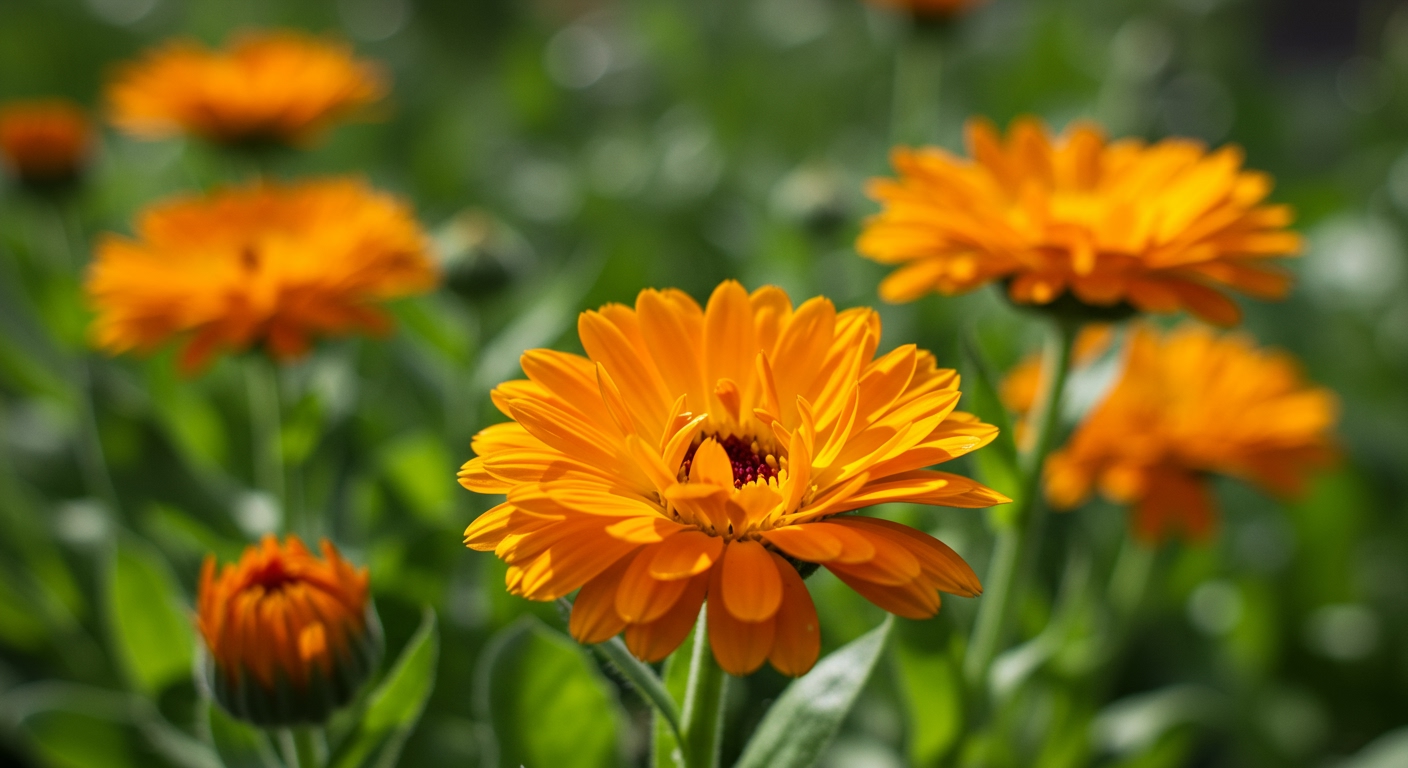
1. Calendula (Calendula officinalis): The Skin Soother
- Benefits: Renowned for its anti-inflammatory, antiseptic, and wound-healing properties. Excellent for soothing skin ailments like rashes, burns, cuts, insect bites, and general irritation [2].
- Growing Tips: Incredibly easy to grow from seed. Prefers full sun and well-drained soil. Deadhead spent blooms to encourage continuous flowering throughout the season.
2. Chamomile (Matricaria chamomilla): Nature’s Calming Tea
- Benefits: Famous for its gentle sedative and calming effects. Perfect for stress relief, sleep aid, and soothing digestive issues like indigestion and gas.
- Growing Tips: Easily grown from seed, often self-sows. Prefers full sun but tolerates some partial shade. Harvest the small, daisy-like flowers when fully open.
3. Peppermint (Mentha x piperita): The Digestive and Headache Reliever
- Benefits: A go-to for nausea, indigestion, bloating, and headaches. Its refreshing aroma also helps with congestion.
- Growing Tips: Be warned: Peppermint is highly invasive! Always grow it in a container to prevent it from taking over your garden. Thrives in moist, rich soil and partial shade to full sun. Easy to start from cuttings.
4. Lemon Balm (Melissa officinalis): The Uplifting Herb
- Benefits: A gentle nervine that lifts the mood, reduces stress and anxiety, and is known for its antiviral properties. Great for promoting a sense of calm.
- Growing Tips: Another member of the mint family, it can spread but is less aggressive than peppermint. Tolerates sun to partial shade and is very easy to grow.
5. Holy Basil (Tulsi) (Ocimum sanctum): The Adaptogenic Powerhouse
- Benefits: An adaptogen, meaning it helps the body adapt to stress. Supports immune function, promotes respiratory health, and enhances mental clarity.
- Growing Tips: Loves warmth and full sun. Easy to grow from seed, though it can be slow to start. Requires regular watering and well-drained soil.
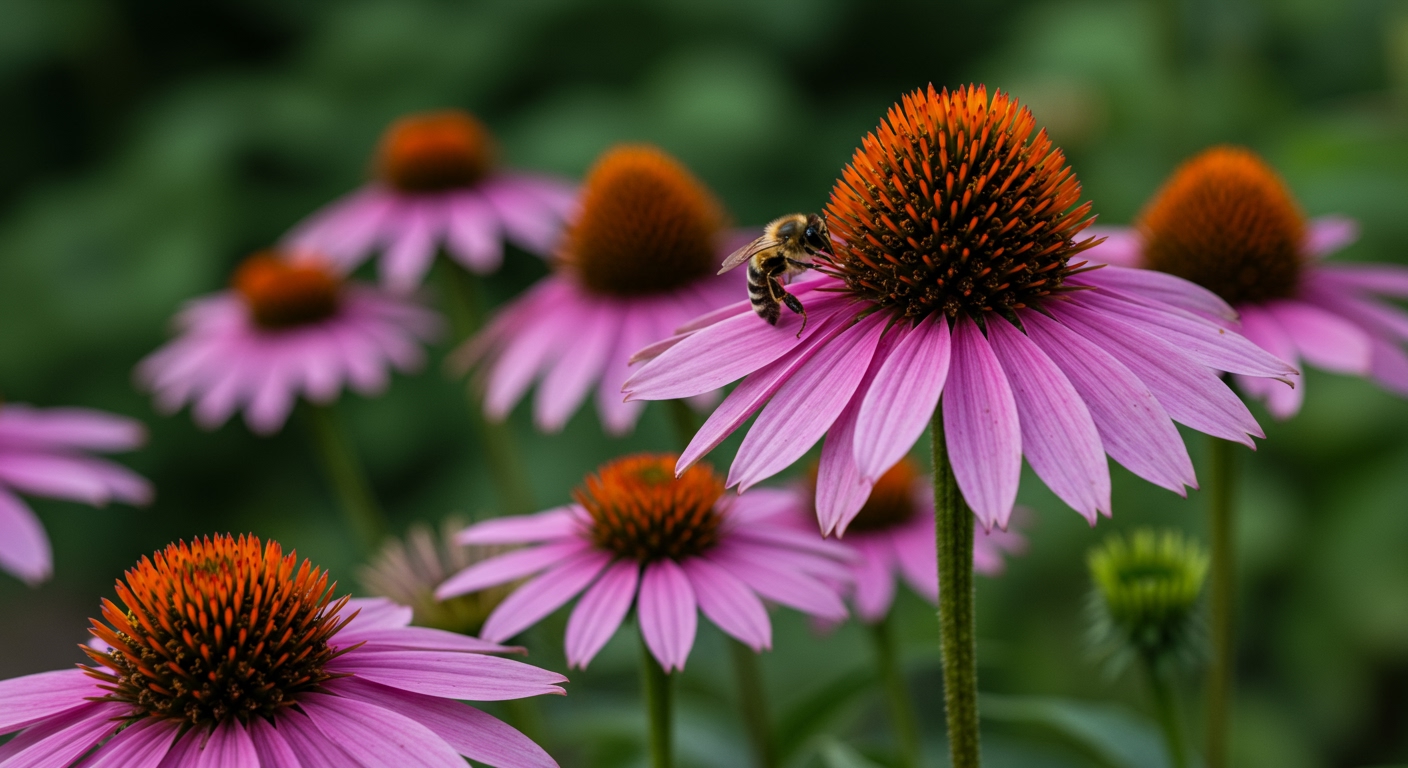
6. Echinacea (Echinacea purpurea): The Immune Booster
- Benefits: Widely known for its immune-boosting properties, making it a popular remedy for colds, flu, and infections. Also has anti-inflammatory benefits.
- Growing Tips: A hardy perennial that tolerates a range of soil conditions and full sun. While the flowers and leaves are used, the root is considered the most potent part for medicinal preparations.
7. Yarrow (Achillea millefolium): The Wound Healer
- Benefits: Historically used to stop bleeding and aid in wound healing. Also helps reduce fevers and acts as an anti-inflammatory.
- Growing Tips: A very hardy perennial that thrives in full sun and tolerates poor soil. Its fern-like foliage and flat-topped flower clusters make it an attractive addition to the garden.
8. Thyme (Thymus vulgaris): Respiratory Support
- Benefits: Potent antimicrobial and antiseptic properties make it excellent for respiratory health, including coughs, sore throats, and congestion.
- Growing Tips: Prefers full sun and well-drained soil. It’s a low-maintenance herb that can be grown in garden beds, rock gardens, or containers.
9. Sage (Salvia officinalis): Memory & Immunity Ally
- Benefits: Astringent, antibacterial, and traditionally used as a digestive aid and a general tonic. Some studies suggest benefits for memory and cognitive function.
- Growing Tips: Tolerates container life well and thrives in full sun with well-drained soil. It’s a beautiful evergreen perennial in many climates.
10. Lavender (Lavandula angustifolia): Aromatic Calming
- Benefits: Famous for its calming aroma, used to alleviate anxiety, stress-related headaches, and promote sleep. Also soothing for minor skin irritations.
- Growing Tips: A beautiful perennial that requires excellent drainage and full sun. Can be grown successfully in pots, especially in colder climates where it can be brought indoors.
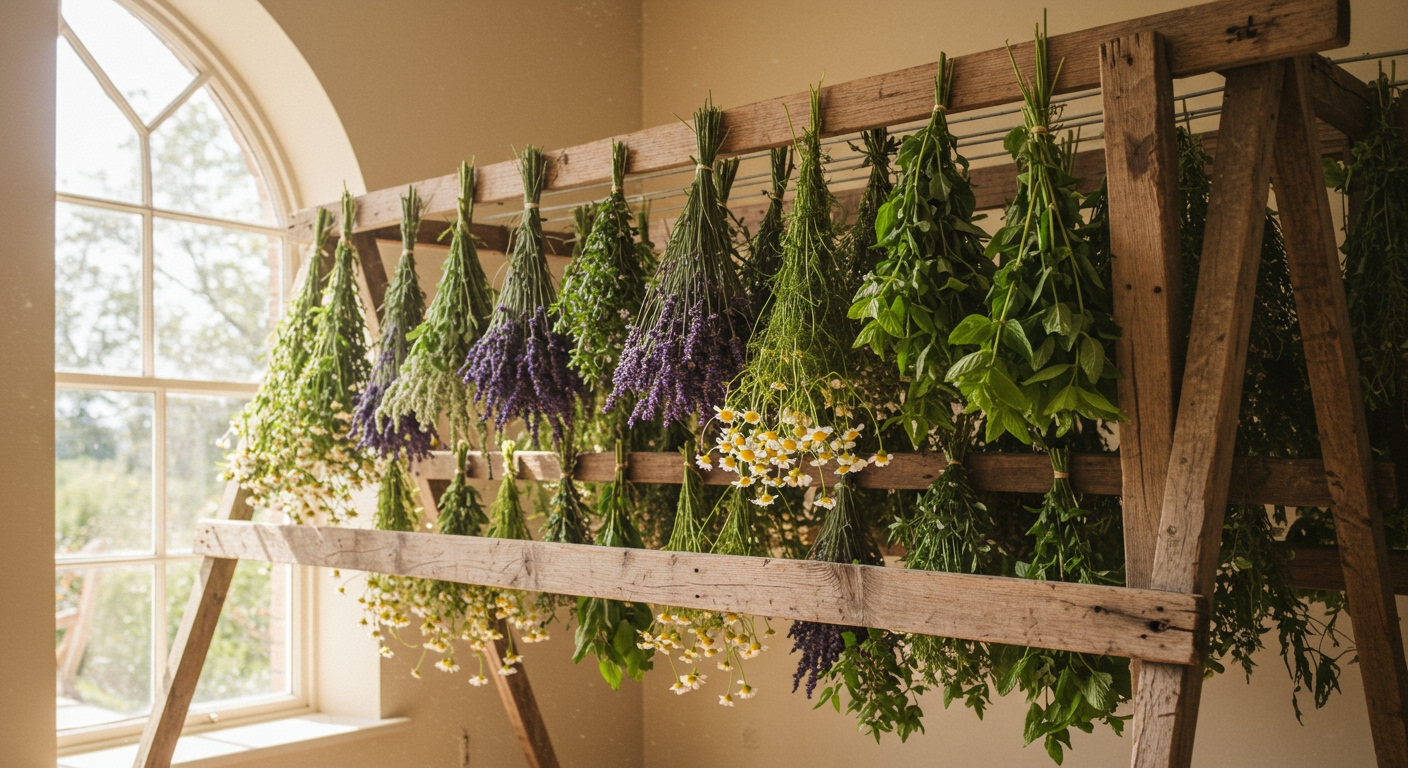
Harvesting and Using Your Medicinal Herbs
Learning how to harvest and use your home-grown herbs is the exciting culmination of your efforts. This is where your easy-to-grow healing plants truly become your home herbal remedies.
When to Harvest
- Leaves: Generally best harvested in the morning after the dew has dried, but before the sun is too hot. Harvest before the plant flowers for maximum potency, as energy shifts to flower production.
- Flowers: Pick when they are fully open and vibrant, again, preferably in the morning.
- Roots: Typically harvested in the fall after the plant’s energy has returned to the roots, or in early spring before new growth begins.
Harvesting Techniques
Always use clean, sharp scissors or pruners. For leaves, snip off stems, leaving at least a third of the plant intact to ensure it can continue to grow. For flowers, snip just below the bloom. Be gentle to avoid bruising the plant material.
Drying & Storage
Proper drying is crucial for preserving the potency and longevity of your medicinal herbs [4]. Air drying is simple: bundle small bunches of herbs and hang them upside down in a warm, dark, well-ventilated area. Dehydrators can also be used on a low setting. Once completely dry (they should be crispy), store them in airtight glass jars away from direct light and heat. Label clearly with the herb name and date.
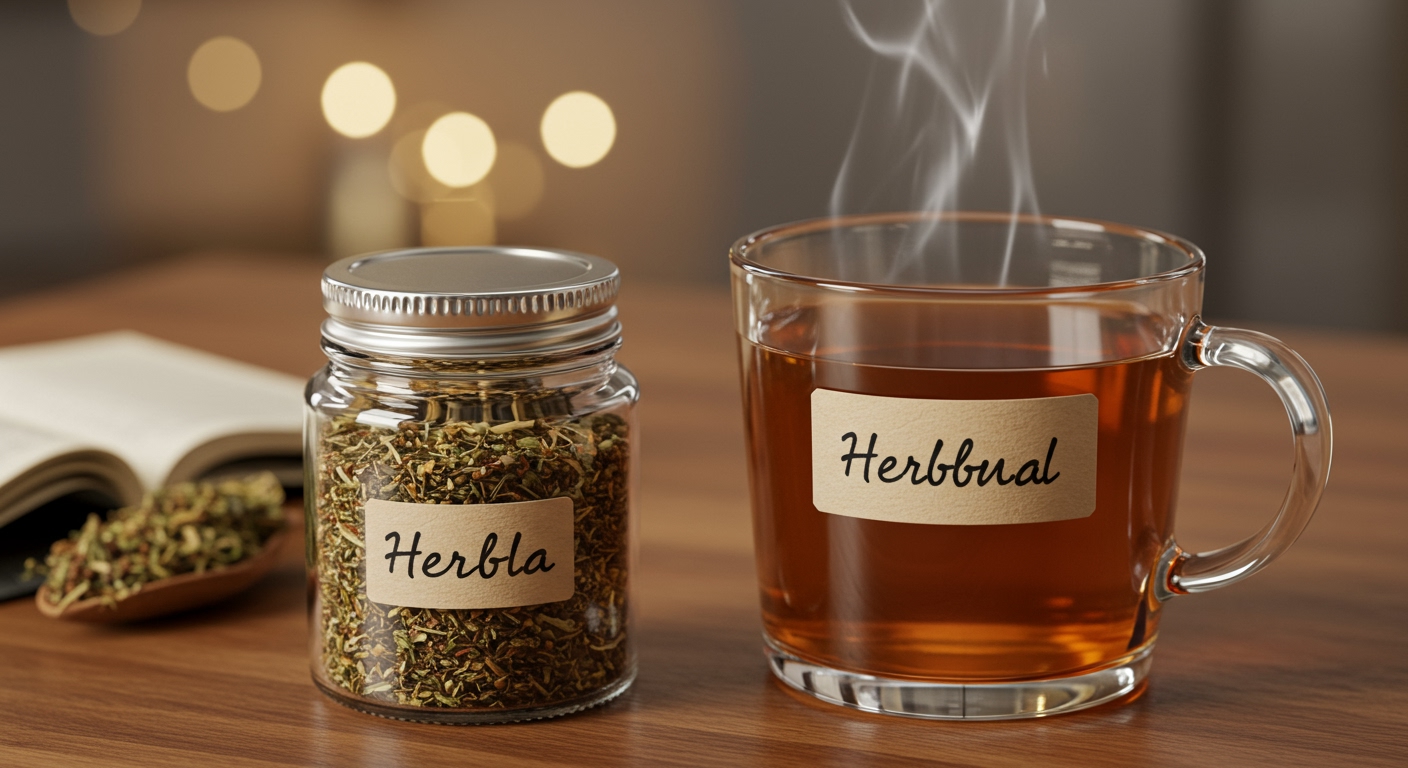
Basic Preparations for Beginners
- Teas (Infusions): The simplest way to enjoy your herbs! Pour hot water over fresh or dried leaves/flowers, steep for 5-15 minutes, strain, and enjoy. Great for calming herbs to grow like Chamomile or Lemon Balm.
- Tinctures: Alcohol extracts that are more potent and have a longer shelf life. While slightly more involved, simple folk tinctures are very beginner-friendly (e.g., filling a jar with herbs and covering with high-proof alcohol for 4-6 weeks).
- Infused Oils & Salves: Excellent for skin healing herbs like Calendula. Infuse dried herbs in a carrier oil (like olive or almond oil) over low heat or in a sunny window for weeks, then strain. This infused oil can be used directly or combined with beeswax to create a soothing salve.
Troubleshooting Common Beginner Gardening Challenges
Don’t be discouraged by minor setbacks; they’re part of the learning process for any medicinal herb garden for beginners.
Pest Management
Healthy plants are more resistant to pests. Encourage beneficial insects by planting diverse flowers. For common pests, try natural deterrents like neem oil spray, insecticidal soap, or simply hand-picking. Some herbs, like catnip, can even act as natural pest repellents.
Disease Prevention
Good air circulation is key. Space your plants appropriately. Proper watering (avoiding overhead watering that wets foliage) also helps prevent fungal diseases. Remove any diseased leaves promptly.
Dealing with Invasive Herbs
As mentioned, some herbs like Peppermint and Lemon Balm can be enthusiastic spreaders. The best strategy is prevention: always plant them in containers, whether buried in the ground or kept above soil, to contain their root systems.
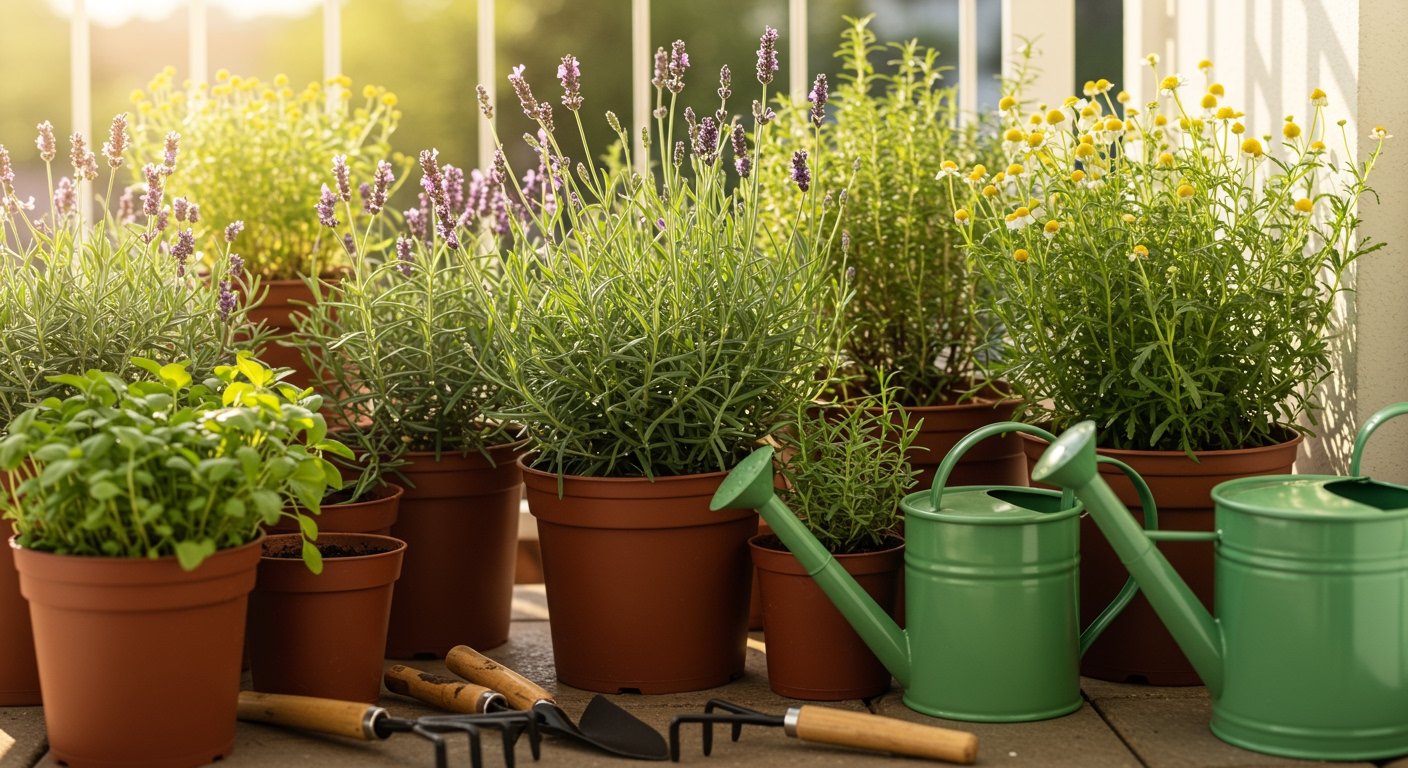
Conclusion: Embrace Your Herbal Journey
Starting your first healing garden with easy medicinal herbs for beginners is more than just a hobby; it’s a step towards greater self-sufficiency, a deeper connection to nature, and a proactive approach to your well-being. The satisfaction of brewing a cup of tea from herbs you’ve nurtured from seed, or applying a salve made from flowers you’ve harvested, is truly unparalleled.
Remember, every expert started as a beginner. Don’t be afraid to experiment, observe, and learn from your plants. Start small, enjoy the process, and soon you’ll be reaping the incredible rewards of your very own home apothecary. Happy growing!


